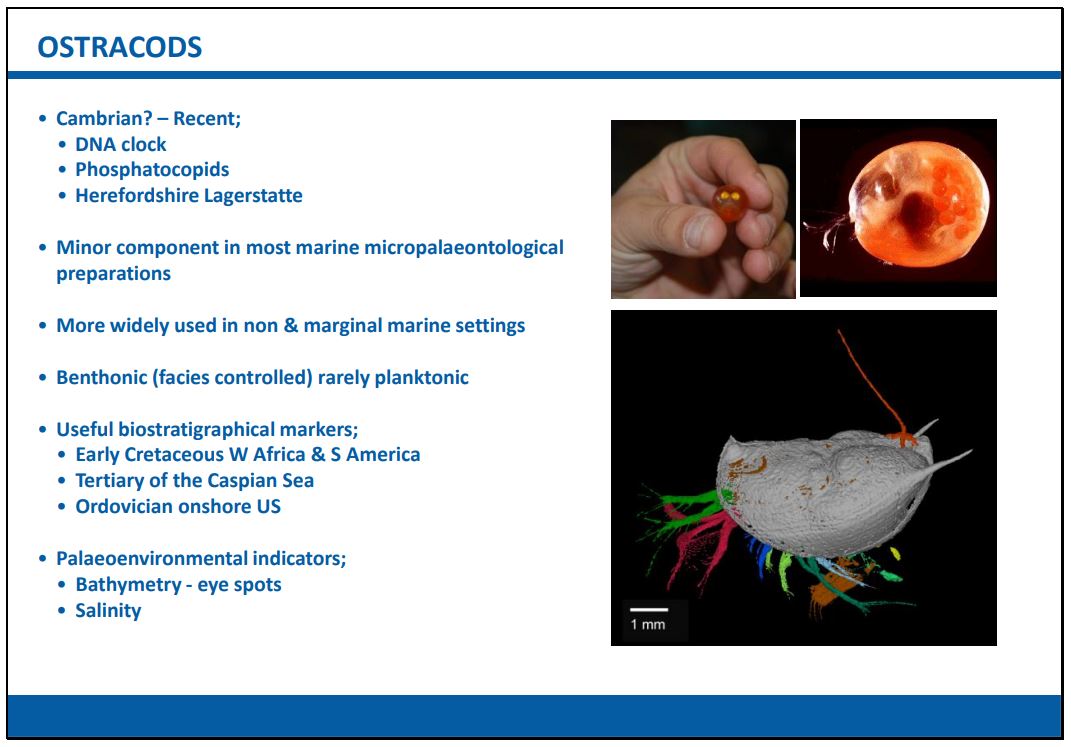Table of Contents
Ostracods

- Bivalved Crustacea (related to the modern barnacle but are not attached to any substrate), free swimming but mainly benthonic, very rarely planktonic
- geologic range: Cambrian?/Ordovician – Recent (“extant”)
- inhabit almost any aqueous environment (even damp woodland leaf litter!) from fresh waters to fully marine (down to abyssal depths)
- usually subordinate to other microfossils in terms of numbers recorded
- useful in lacustrine oil basins
- biostratigraphically significant in particular areas/intervals but subordinate to other fossil groups and therefore has relatively few practicing specialists


Left: An SEM photo of a recent ostracod. The carapace (shell) is usually separated from its partner on fossilisation. The animal itself is around 0.5mm in length. Right: Ostracods living on marine algae. The algae provides a “home” while the ostracods excrete nutrients for the algae.